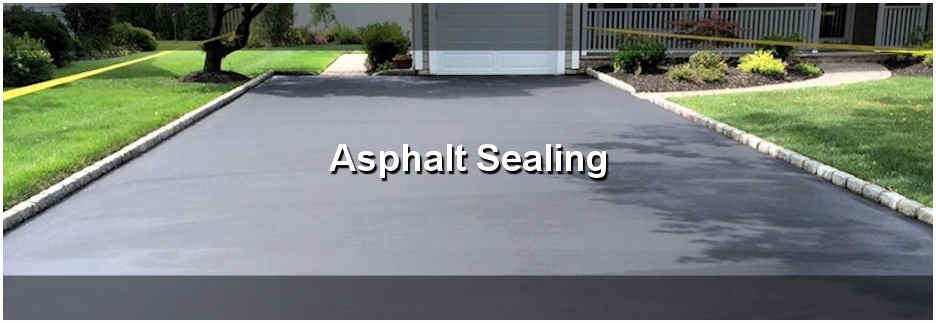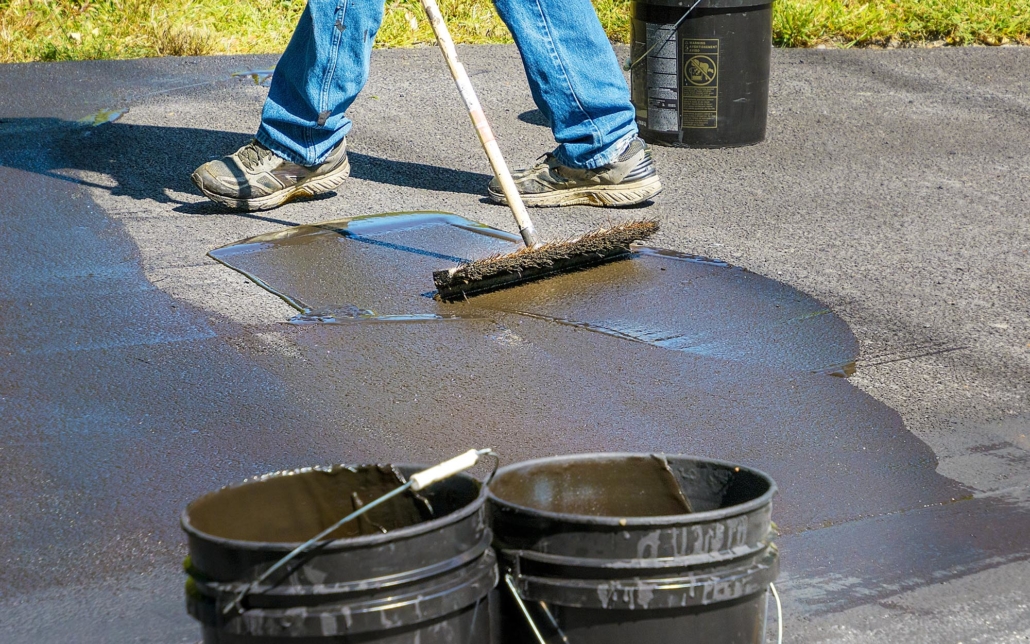Elevate Security and Charm: Angled Parking Area Solutions with Asphalt Sealing
Elevate Security and Charm: Angled Parking Area Solutions with Asphalt Sealing
Blog Article
Hot Mix Asphalt: A Sustainable Option for Sidewalk
Hot Mix Asphalt (HMA) has actually emerged as a leading sustainable choice for sidewalk services, offering a myriad of environmental benefits and cutting-edge innovations. As the need for environment-friendly building and construction techniques expands, checking out the subtleties of HMA's sustainability can supply valuable understandings right into the future of pavement options.
Environmental Advantages of Warm Mix Asphalt

In Addition, Hot Mix Asphalt assists to mitigate city heat island results. Its dark color takes in sunlight, lowering the amount of warmth showed back right into the environment contrasted to lighter-colored pavements. This can decrease ambient temperatures in metropolitan locations, reducing the need for a/c and inevitably decreasing power intake.
Additionally, Hot Mix Asphalt adds to improved stormwater management. Its porous nature enables water to reenergize and infiltrate the pavement groundwater materials, lowering drainage and the risk of flooding. These environmental advantages make Warm Mix Asphalt a lasting selection for leading roads and highways.
Power Performance in HMA Manufacturing
Is energy efficiency a crucial factor in the production of Warm Mix Asphalt (HMA)? Energy plays a significant duty in the manufacturing of HMA, impacting both cost and ecological sustainability. One crucial element of energy effectiveness in HMA production is the use of cozy mix asphalt (WMA) innovations.
Additionally, advancements in plant technologies have actually caused more energy-efficient HMA manufacturing processes. Modern plants are created with attributes like recycled asphalt pavement (RAP) handling abilities, efficient heater systems, and boosted insulation, all contributing to energy financial savings. By enhancing power usage in HMA production, the industry can decrease its carbon impact while maintaining top quality pavement materials. Energy efficiency is, consequently, a critical factor to consider in making sure the sustainability of Warm Mix Asphalt manufacturing.
Recyclability of Warm Mix Asphalt
The recyclability of Warm Mix Asphalt (HMA) is a critical facet of its sustainability and long-term environmental influence. HMA is one of one of the most recycled products in the United States, with over 100 million lots of redeemed asphalt pavement (RAP) being reused each year in brand-new sidewalk building and construction. Reusing HMA provides numerous ecological benefits, such as lowering the need for virgin materials, reducing power intake throughout production, and decreasing the quantity of waste sent out to garbage dumps.
The process of reusing HMA entails milling the existing pavement, crushing it into smaller sized pieces, and mixing it with new accumulation and asphalt binder to produce a recycled mix. This recycled mix can usually carry out along with or perhaps better than conventional HMA, while requiring fewer resources and creating lower greenhouse gas emissions. By incorporating RAP into new sidewalk projects, roadway firms can preserve natural deposits, minimize prices, and decrease the ecological impact of road building and maintenance activities. In general, the recyclability of HMA plays a considerable role in promoting lasting methods within the sidewalk sector.

Long-Term Efficiency of HMA
Asphalt pavements show sturdiness and strength over an extensive duration, mirroring the long-term performance of Hot Mix Asphalt (HMA) The longevity of HMA can be credited to its capability to endure hefty website traffic loads, severe weather, and the impacts of aging. Research studies have actually revealed discover this that well-designed and appropriately built HMA sidewalks can last for twenty years or more with routine maintenance. The key to optimizing the lasting efficiency of HMA exists in making use of high-quality products, adhering to finest methods in building, and carrying out efficient maintenance strategies. Correct water drainage, regular assessments, and timely repair work are important for preserving the architectural stability of HMA pavements over time. In addition, improvements in HMA innovation, such as the use of polymer-modified binders and cozy mix asphalt, have even more enhanced the durability and long life of HMA pavements. By focusing on top quality building and construction and maintenance practices, HMA proceeds to show itself as a cost-effective and sustainable solution for resilient pavement framework.

HMA: Durability and Sustainability
Showing both toughness and sustainability, Hot Mix Asphalt (HMA) has ended up being a foundation in the construction of resilient sidewalk infrastructures - regrading. HMA's durability originates from its ability to withstand hefty tons, harsh climate condition, and high website traffic volumes, making it a reliable option for roadways, freeways, and airport paths. The composition of HMA, which normally includes aggregates, binder, and filler, plays a crucial function in boosting its durability and resistance to tear and wear
Additionally, HMA's sustainability lies in its recyclability and energy-efficient production procedure. The capability to recycle reclaimed asphalt pavement (RAP) in brand-new HMA mixtures decreases the need for virgin materials and reduces the ecological impact of pavement building and upkeep. In addition, the energy effectiveness of generating HMA depends on its lower mixing temperatures compared to various other pavement products, causing minimized power usage and greenhouse gas exhausts.
Conclusion
To conclude, warm mix asphalt (HMA) provides a lasting option for sidewalk with its eco pleasant characteristics. HMA's recyclability, energy effectiveness in manufacturing, and long-term longevity make it an environmentally friendly option for roadway building and construction. By saving natural deposits, lowering waste, and decreasing greenhouse gas exhausts, go to this web-site HMA plays a crucial role in promoting sustainability in infrastructure development. Its ability to mitigate urban warmth this post island effects better underscores its relevance in producing durable and ecologically conscious pavement systems.
HMA is one of the most recycled products in the United States, with over 100 million heaps of recovered asphalt pavement (RAP) being recycled every year in new sidewalk building.The process of reusing HMA includes milling the existing sidewalk, crushing it right into smaller pieces, and mixing it with brand-new aggregate and asphalt binder to produce a recycled mix.Asphalt pavements demonstrate toughness and resilience over an extensive period, reflecting the lasting performance of Hot Mix Asphalt (HMA) Furthermore, improvements in HMA technology, such as the usage of polymer-modified binders and warm mix asphalt, have additionally enhanced the durability and durability of HMA sidewalks. The capability to recycle reclaimed asphalt sidewalk (RAP) in new HMA mixtures reduces the demand for virgin products and reduces the ecological influence of pavement construction and maintenance.
Report this page